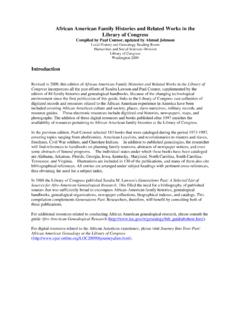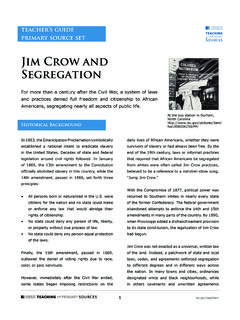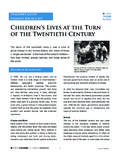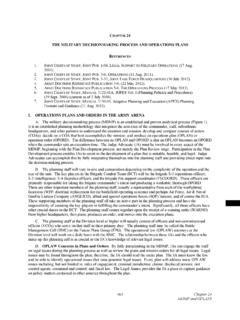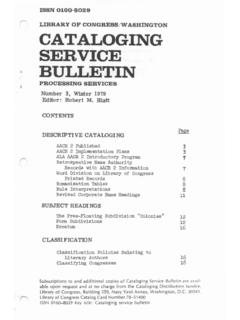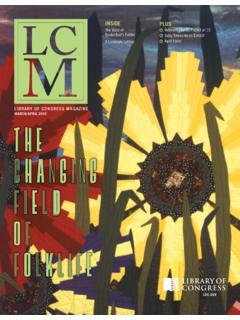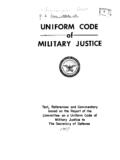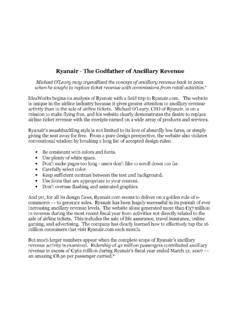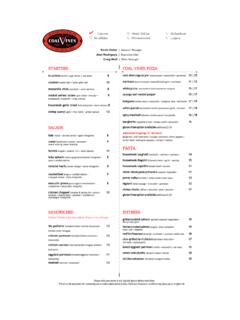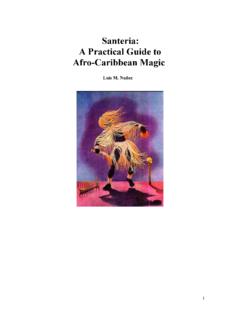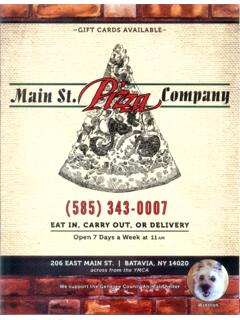Transcription of Godfather and Godfather II - Library of Congress
1 The Godfather and The Godfather Part II By Michael Sragow The A List: The National Society of Film Critics 100 Essential Films, 2002 Reprinted by permission of the author Although Francis Ford Coppola has often been depicted and loves to depict himself as primarily an emotion-al and intuitive director, The Godfather is a film filled with correct choices, painstakingly thought out and pas-sionately carried through. Part of what made it a break-through as a crime move is that it s about gangsters who make choices too and aren t propelled simply by blood-lust and greed.
2 They re battling for position in New York s Five Families, circa 1945-1946. If Don Vito Corleone (Marlon Brando) and his successor Michael (Al Pacino) come off looking better than all the others, it s because they play the power game the cleverest and best and the game is sordidly exciting. For all the movie s warmth, you could never confuse the Corleones or their allies and competitors for fun-loving ethnic types. The first scene shows the Don exacting deadly patronage, coercing an undertaker named Bonasera into vows of love and pledges of unmitigated loyalty in exchange for a feudal bond than can t be bro-ken or forgotten.
3 Before Coppola has finished cutting be-tween Don Vito accepting fealty in his office to his daugh-ter celebrating her wedding outside with the sepia in-teriors and golden exteriors illustrating the split in the Corleones lives we ve also heard the Don tell a Sinatralike singer, Johnny Fontane (Al Martino), that a man who doesn t spend time with his family can never be a real man. Once Coppola ties the themes of power and family to-gether, he takes off with a story in the grand tragic man-ner. Its motif is the corruption of once justifiable goals, their altering through histories of struggle and domina-tion.
4 The Corleones are one generation removed from Sicily. They re in the business of staying alive in America, and part of their business requires them to kill The growth of Michael Corleone and Pacino s startling physical and emotional alteration in the role give the film its shape. A college man who is also a World War II hero, he tests his strength and cunning in the streets to avenge his father s near-murder. He states his rationale to his girlfriend (later wife) Kay, played by Diane Keaton: My father s no different than any other powerful man.
5 Any man who s responsible for other people, like a senator or president. Kay re-sponds, You know how na ve you sound? Senators and presi-dents don t have men killed. In a line that marked a breakthrough for mainstream political awareness when the film premi-ered in 1972, Michael wearily answers, Who s being na ve, Kay? But when Michael says his father s way of doing things is finished, he is being na ve. And the way Pacino plays him, you can tell that deep down he knows the vortex of mob violence has sucked him in. Pacino s performance is so intimately felt-out that each milestone (or, in Kay s view, millstone) on his path both catches you by surprise and registers indelibly.
6 There s the moment he stands guard in front of the hospital and realizes that his hands aren t shaking (though the good-hearted baker next to him can scarcely hold on to his cigarette). There s the chilly air of corporate homicide he adopts to prove to his brother, Sonny, that his plan to kill his father s would-be murderer and a crooked cop is not personal .. it s strictly business. And there s the volcanic eruption of the actual double homicide. What makes this both horrifying and seductive is that we re not just seeing the hardening of a killer but the strengthening of a young man who s getting back to his roots.
7 That becomes clear when he hides out in Sicily and marries a local beauty named Apollonia (Simonetta Stefanelli). It s as if blasting the dreams of a straight life and getting scarred in single-warrior combat have recon-nected him to the earth. He returns to New York with the authority of someone who s touched the psychic bottom. Marlon Brando as Don Vito Corleone. Courtesy Library of Congress To this day it s jolting to see Brando as Don Corleone the receded hairline, the gray pencil moustache, jowls hanging off a twisted mouth, and a voice cracked from years of command.
8 Brando makes the character extraor-dinarily complex largely through his physical expressive-ness. He walks as if his shoulder blades were pinned be-hind him (which emphasizes an old man s paunch in front). But the sensibility beneath the authority is aston-ishingly agile: the Don can suddenly break into mimicry, or turn his daughter in a waltz with a slight protective bent that catches sentiment in movement. Brando puts so much substance into his relatively few scenes, blowing hot and cold with equal eclat, that he enables Coppola to draw parallels between his sons and himself through nu-ances at once fleeting and concrete.
9 James Caan plays the eldest boy, Sonny, like the Don without his lid on. He feels that when he s indulging his appetites (for action and for sex), he s fueling the fires that protect his family, but his lack of control triggers a gang war that ends in his own death. Caan animates his body with a high-strung, barely controlled rage; when he lets go, kicking and bashing his wife-beating brother-in-law Carlo (Gianni Russo), the effect is scary and exhila-rating. He s like a Brando action hero on amphetamines. (Carlo s wife, Connie, played by Talia Shire, gives a vividly unsentimental performance, expertly toeing the line be-tween pathos and hysteria.)
10 John Cazale s Fredo, who d be next in line were it not for his weak nature, has the disarming nakedness and sensitivity Brando showed in movies like The Men. Even Robert Duvall, as Tom Ha-gen, Don Vito s German-Irish adopted son and consig-liere, echoes Brando in his eloquent wariness, his furtive intelligence. The film begins with a trumpet solo that sets off sad, comic, and heroic vibrations. As the brass flourish turns into a waltz, courtship strolls and wedding bashes, church rituals and ritual murders, merge in an eternal dance of life and death.
